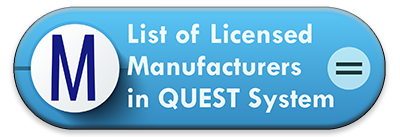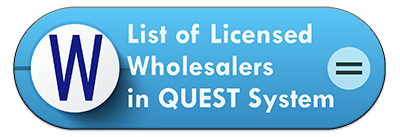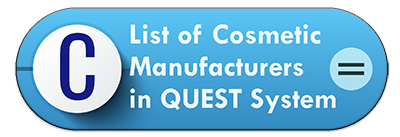Consumer interest in health and self-care has expanded the market for a wide range of health supplements and traditional products. These categories of products have been used since the earliest history of humanity and have formed one of the foundations for healthcare in cultures throughout the world. With the increased use of such products and the broad spectrum of products classified under this category, it is important to ensure that the products consumed are safe for consumers.
Evaluation of the safety of complementary medicine products (health supplements, herbal products and traditional medicine) must be done in a manner that is cost effective and science-based within the regulatory environment.
Most ingredients might be considered as safe, considering the experience or history of long use. When an ingredient is well known for a specific use, the assessment will be limited to published data (including traditional references). However, under certain conditions, additional data will be required to prove the safety of the product, e.g. fora new active ingredient or a new combination of ingredients.Even if a product has been in use over a long period of time, chronic toxicology risks may have occurred but not recognized.
This Guideline aims to provide guidance in submitting safety data requirements for assessment to facilitate registration of complementary medicine.
Proof that a product is of quality, safe and as efficacious as claimed is a pre-condition for marketing of a complementary medicine product. Safety is dependent upon the overall product formulation, its intended use, dosage, route of administration, duration of use and targeted group where applicable.
Each active ingredient shall make a relevant and reasonable contribution to the overall therapy and the quantity of each active ingredient shall be safe for the recommended use and range of dosage.
3.1 Safety data shall be required to substantiate the safety profile for the following complementary medicine product to be marketed but not limited to:
a. New ingredients
b. Existingactive ingredients/products with new combination, new dosage, new delivery system, new methods ofmanufacturing or for use in a special target population (e.g. pregnant, lactating women, children, etc).
c. Existing ingredients/products with safety concern. Safety concerns may be newly emerging or established, and in some cases may need additional information to support safe usage in complementary medicine. These safety concerns may be addressed by including additional cautionary statements.
3.2Safety substantiation might not be required for complementary medicine products that do not fall under items a. - c. as mentioned above. Traditional medicines with documented data; health supplements which have been consumed as food or is a food constituent within the normal usage limitor for those containing ingredients with well documented and established safety profile may also not require further safety substantiation.
Further examples would include:
i) Product containing the same combination (same number of active ingredients) as with another previously registered product with the active ingredients within limits previously registered.
ii) Combination of vitamins and minerals within permissible limits
iii) Formulary products
3.3 Some general principles on assessing product safety shall be as follows:
a) Single ingredient
For well-known ingredients such as vitamins or minerals and herbal ingredients, documented data will be accepted to demonstrate safety of use.
If an ingredient has been used traditionally and documented that it had no safety concerns, the submission of toxicology studies will not be required. However, if history of use is used to support safety, then the details of use must be consistent with its traditional use.
If toxic effects have been reported or there is insufficient documented safety evidence and there are doubts concerning the product/active ingredient, submission of toxicological reports will be required.
In a case when the anticipated intake of this ingredient is significantly higher than the estimated historical intake, or for which the historical intake cannot be assessed, additional safety data/studies will be required.
b) Combination products
There are no special requirements for combinations of well-known ingredients such as vitamins or minerals. Each active ingredient and dosage will be assessed independently and according to documented data.
The intended use/function of each ingredient must support a logical use of the combination in question and if for traditional use must prescribe to the philosophy of that culture. Like acting herbal ingredients are considered to have an additive effect.
Therefore, the dosage of each active substance may be reduced as compared to its single use. The counteracting by one active ingredient to the adverse reaction produced by another must be explained. Illogical combination of herbs or ingredients having widely different therapeutic uses will require justification.
However, for a combination consisting of new active ingredients, toxicological and clinical data for finished product may be requested. This will also apply to new combinations of well-known ingredients. Safety data will have to be on the product with information on individual ingredients as supportive references.
c) Target population
It cannot be assumed that an ingredient is suitable for pregnant or lactating women unless evidence is provided to the contrary. If required, the product should carry the following statement:
“Pregnancy and breastfeeding: Insufficient reliable data” or
“If you are pregnant /breastfeeding, please consult your doctor/pharmacist before taking this product.”
A product will also be generally assumed not safe for children unless proven otherwise. If the product has children dosage instructions, there must be evidence to fully demonstrate safety in children of that age.
Information that will be required to substantiate the safe use of a product may include but is not limited to:
4.1 Literature search
A comprehensive literature search which would include both positive and negative reports must be submitted. The search criteria used should also be mentioned and references cited. Certified translated copies by the recognised bodies must also be provided if the original articles are not in the English or Malay language.
4.2 Extent of use
Information on extent of use in other countries may provide insight into the safety profile. The maximum amount of the ingredient that is recommended or suggested for use as food may be provided as proof of safe use. However, the amount in the product should not exceed the recommended level.
If evidence is to be based on traditional use, it must be clearly stated that the ingredient under review is equivalent to that used traditionally. Knowledge of chemical components of an ingredient will aid in safety evaluation by identifying potentially toxic constituents or constituents known to mimic or modulate endogenous intermediates. Modern extraction methods used may in some instances produce a substance that is compositionally different from those produced using traditional methodology.
The industry should be able to capture the safety data of any abnormalities and or untoward adverse reaction that might be occurred or derived from animal and or human study. Efficacy data will also often include information on adverse events that will be useful in safety evaluation.
Evidence of the regulatory status of the product in other countries may also be provided as supportive evidence to justify safe use of the product.
4.3 Pharmacological properties
This would include pharmacodynamic and pharmacokinetic studies for medicinal use except for traditional products which will be based on the philosophy of its traditional use.
4.4 Toxicology data
The intended use and the duration of use whether it is for short or long term use will also determine the type of toxicity dataneeded, e.g acuteand/or chronic toxicity. Other toxicity data which should be identified would include teratogenicity, carcinogenicity and mutagenicity data, where necessary. All evidence, both favorable and unfavorable should be included.
Toxicity data could be derived fromsourcessuch as authoritative reference test or from animal and/or human study. The Organisation for Economic Co-operation and Development (OECD)Guidelines shall be used as a guide to conduct toxicity study on animals.
4.5 Human data
Safety profile of an ingredient may be obtained from sufficiently powered prospective observational studies, clinical trials, dose-escalation studies, systematic reviews, retrospective meta-analysis studies or even observation of adverse events under controlled studies.
4.6 Post marketing surveillance
Premarket safety studies are sometimes limited by the number of study subjects. When products are in wide use, detection of adverse events provides a strong surrogate for safety monitoring in the general population and in consumers who have chronic conditions. Post marketing surveillance also provides valuable information about a product’s safety profile in vulnerable populations e.g. in pregnancy, lactation, the elderly etc.
Interaction with other medications/ supplementation or even food has significant safety implications because of their effects on bioavailability or induction/inhibition of metabolizing enzymes. Such interaction may lead to synergism or antagonism of intended effects.
Safety concerns from existing products may come from the reporting of the adverse reaction monitoring mechanism in the market or through post market control.
The industry and regulator may collect those data from post-market reporting and should assess the causality between the emerging safety concern and the product.
5.1 New ingredient
New ingredient refers to complementary medicine active ingredient/excipient that has never been listed in the Quest database.
5.2 New delivery system
New delivery system involves a change in the method of administration and/or the physical dosage form of a complementary medicine product.
5.3 New combination
A combination product, even if it consists of only existing ingredients, is regarded as a New Combination, when no product of the same composition (in terms of the constituent ingredients and their relative quantities if higher than documented limits) had been approved for marketing in Malaysia before.
5.4 New dosage
New dosage refers to the quantity of ingredients/ substances to be used in a daily dose as well as single dose basis, if higher than documented limits.
5.5 Recognised bodies (with reference to translation of documents)
Certified translators, embassies, Malaysia Pharmaceutical Society (MPS), Malaysian Organisation of Pharmaceutical Industries (MOPI), Pharmaceutical Association of Malaysia (PhAMA), Malaysian Dietary Supplement Association (MADSA), Federation of Chinese Physicians & Medicine-Dealers Association of Malaysia (FCPMDAM), Federation of Chinese Physicians & Acupuncturists Association of Malaysia (FCPAAM), Malaysian Chinese Medical Association (MCMA), Direct Selling Association of Malaysia (DSAM), Malaysian Direct Distribution Association (MDDA), Persatuan Pengeluar Ubat Tradisional Malaysia (PURBATAMA), Gabungan Pertubuhan Pengamal Perubatan Tradisional Melayu Malaysia (GAPERA), Malaysian Homeopathic Medical Council (MPHM), Malaysian Association of Traditional Indian Medicine (PEPTIM), and related industry associations of the country of origin recognized by the local authority.
- World Health Organization. General Guidelines for Methodologies on Research and Evaluation of Traditional Medicine, 2000.
- World Health Organization. Guidelines for the regulation of herbal medicines in the South-East Asia Region, 2003.
- WHO Research Guideline for The Evaluation of Safety and Efficacy of Herbal Medicine 1993.
- Organization for Economic Cooperation and Development (OECD) Guideline for toxicity studies in animals. Webpage: www.oecd.org
- Therapeutic Goods Administration, Australia; Webpage: www.tga.gov.au
- Health Canada; Webpage: www.hc-sc.gc.ca/index-eng.php
- European Medicines Agency; Webpage: www.emea.eu
- Medicines and Healthcare Products Regulatory Agency (MHRA); Webpage: www.mhra.gov.uk
- ASEAN Traditional medicine and Health supplement Product Working Group (TMHS PWG) Meeting minutes
















